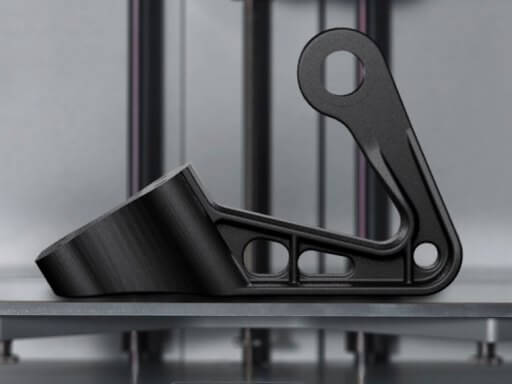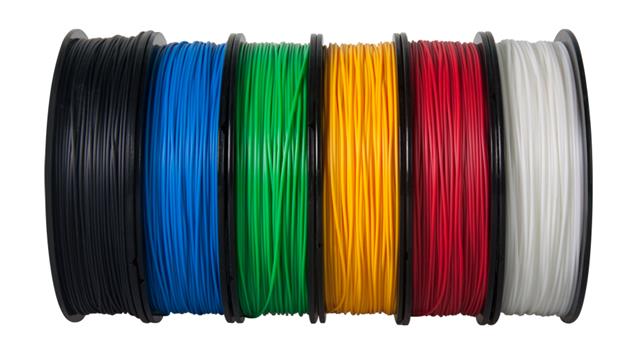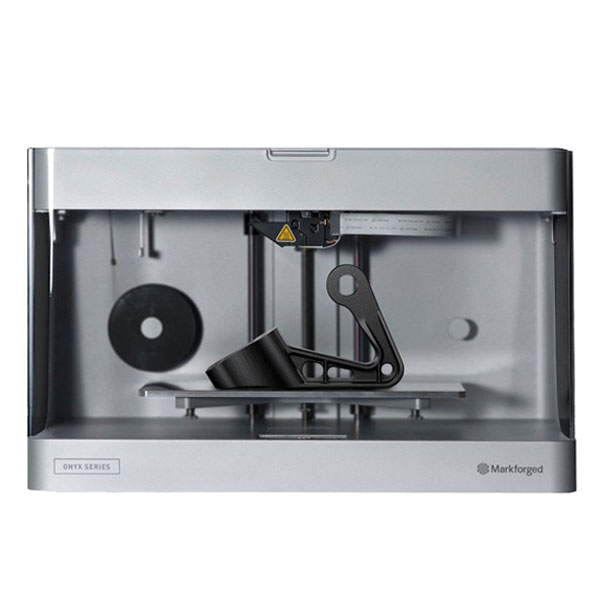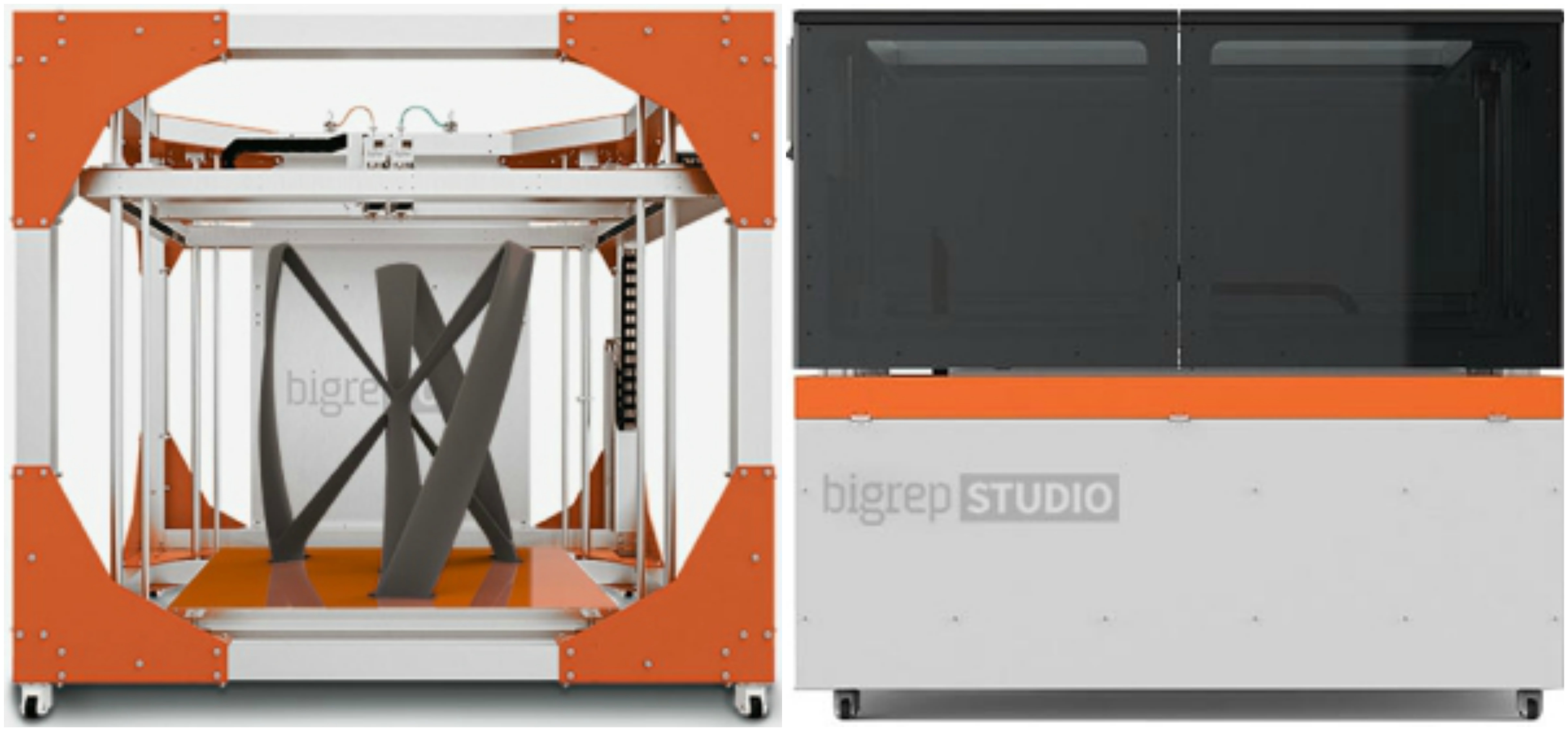Composite 3D printing is a young technology, but one with huge, largely untapped, potential.
What is a Composite?
Composites generally comprise a core polymer material and a reinforcing material, like chopped or continuous fiber. The composite material offers higher strength and stiffness compared to non-reinforced polymers. In some cases, it can even replace metals like aluminium.
These enhanced material properties make composites sought-after materials for tooling and end-use applications in a range of industries, like aerospace, automotive, industrial goods, plus oil and gas.
Register for our upcoming webinar to gain a complete understanding of 3D Printing Composites.
What Are The Benefits of Composite 3D Printing?
The ability to streamline and cut the cost of traditional composite manufacturing is one of the key factors driving the growth of composite 3D printing.
There are numerous methods for fabricating composite components, in addition to 3D printing. However, most of them have a range of drawbacks: the need for the manual layup of the layers of a composite and the use of expensive curing equipment and tooling, like moulds.
This makes the process of traditional composite manufacturing very labour, resource and capital intensive, which means that it can be difficult to scale it to large volumes.
3D printing, on the other hand, enables the manufacturing process to be automated, since the entire process is driven by software and requires manual input only at the post-processing stage.
Continuous vs Chopped Fiber
In 3D printing, it’s possible to print with two reinforcement types of fiber, chopped and continuous. In the case of chopped fiber, small strands, less than a millimetre in length, are integrated into the polymer material. The percentage of fiber used, and the base thermoplastic determine how strong the final part is.
In the case of continuous fiber, long strands of fiber are mixed with a thermoplastic, like PLA, ABS, Nylon, PETG and PEEK during the printing process. Parts 3D-printed with continuous fiber are extremely lightweight, yet as strong as metal.
In terms of types of fiber used, carbon fiber is one of the most popular, followed by fiberglass and Kevlar.
Composite 3D Printing Technologies on the Market
In 2020, the market for composite 3D printing was young, with only a handful of companies offering composite 3D printing solutions. Most 3D printers capable of processing composite materials are based on the polymer-extrusion process, known as Fused Filament Fabrication (FFF).
In FFF, a nozzle is moving above the build platform, extruding a melted thread of plastic, called a filament, and creating an object layer-by-layer.
3D printing of filaments containing chopped fiber is straightforward, only requiring a hardened steel nozzle to resist abrasive fiber strands. However, when it comes to continuous fiber printing, the FFF process will require a second nozzle to separately deposit a single, uninterrupted strand of fiber.
Markforged: a Composite 3D Printing Pioneer
The latest continuous fiber 3D printing method was first introduced by Markforged in 2016, when the company launched the Mark Two 3D Printing system.
- Plastic: Onyx (Plastic),
- Fiber: Carbon Fiber, Fiberglass, Kevlar, and HSHT (High-Strength High-Temperature) Fiberglass

Anisoprint’s Composite Fiber Coextrusion technology
Anisoprint, the Russian and Luxembourg start-up, has developed an extrusion-based process that the company calls Composite Fiber Coextrusion (CFC).
Anisoprint’s first machine has been a desktop-format Composer 3D printer. Recently, the company also unveiled the Anisoprint ProM IS 500, the industrial machine designed to print high-temperature thermoplastics with continuous fibre reinforcement. The Anisoprint ProM IS 500 will have up to four changeable print heads for printing composites and pure plastic. With these, it will be possible to reinforce different zones of the part with different composites (e.g. carbon/basalt), depending on the user’s goal.
When the system officially launches at the end of 2020, it will mark yet another step forward, both for composite 3D printing and advanced polymer manufacturing.
Composite 3D Printing and Robotics
In addition to FFF 3D printing, a few companies have developed an approach which combines composite 3D printing with robotics. Such a combination provides greater flexibility in terms of geometry, since the robotic arm can move along multiple axes, and the possibility of printing larger parts.
Arevo is one such company that has developed a laser-based method for 3D printing with carbon fiber. The process involves the deposition of layers of pre-impregnated continuous carbon fibre filament, that is simultaneously heated with a laser, before a roller compresses it onto the build surface. The process resembles the Direct Energy Deposition method, which is typically used with metal.

Composite 3D Printing Applications
Applications for composite 3D printing are running the gamut, from prototyping to tooling and end-use part manufacturing.
Using Composite 3D Printing for Large Blade Tooling
Thermwood is a US-based manufacturer that has developed Large Scale Additive Manufacturing (LSAM) technology capable of printing large composite tooling. One of the unique features of Thermwood’s LSAM 3D printer is its hybrid approach to producing parts, combining additive and subtractive technologies.
Coming back to Bell, the company required a large composite tooling with good surface finish, tight tolerances and the ability to withstand autoclave processing — a technique which helps to strengthen composite parts that will be exposed to elevated pressure and temperature.
LSAM was ideal for such an application for two main reasons. First, it allowed the 6 m long tool to be manufactured from a high-performance carbon-reinforced PESU material, which can withstand high pressures and temperatures. Second, since LSAM is a hybrid technology, a part can be 3D printed and finished without the need for a second machine — helping to further speed up the production process.
These benefits enabled Thermwood to manufacture the tool in just a few days, as opposed to the months it would take with traditional processes.
This achievement points to the new possibilities that large-scale composite 3D printing unlocks for large and technically complex aerospace components.
Wärtsilä 3D Prints Composite Lifting Tool
The company used to machine such tools out of solid steel but found the process too expensive and opted for 3D printing a polymer lifting tool reinforced with carbon fibre. The resulting tool was 75 per cent lighter while capable of lifting 960 kg. Wärtsilä believes that it saved €100,000 in tooling alone by switching to composite 3D printing.
This example also illustrates the possibility of replacing heavy metals used to manufacture a part, with lighter, but equally strong, composite materials.
Composite Bike Frames
Composite 3D Printing: Pushing the Limits of Composite Manufacturing
Despite being a young technology, composite 3D printing is gaining a stronger foothold within the manufacturing industry. It offers a faster and more automated approach to producing composite parts, which for a long time have been handmade.
Composite 3D printing helps in rethinking the material choice for certain applications, allowing manufacturers to replace metal with durable, cheaper plastic. Finally, it helps to make the process of manufacturing composite parts less expensive.
Combined, these benefits suggest that composite 3D printing will only be growing and maturing to become a standard method in the composite manufacturer’s toolbox.
Source: https://amfg.ai/2020/02/25/composite-3d-printing-an-emerging-technology-with-a-bright-future/








